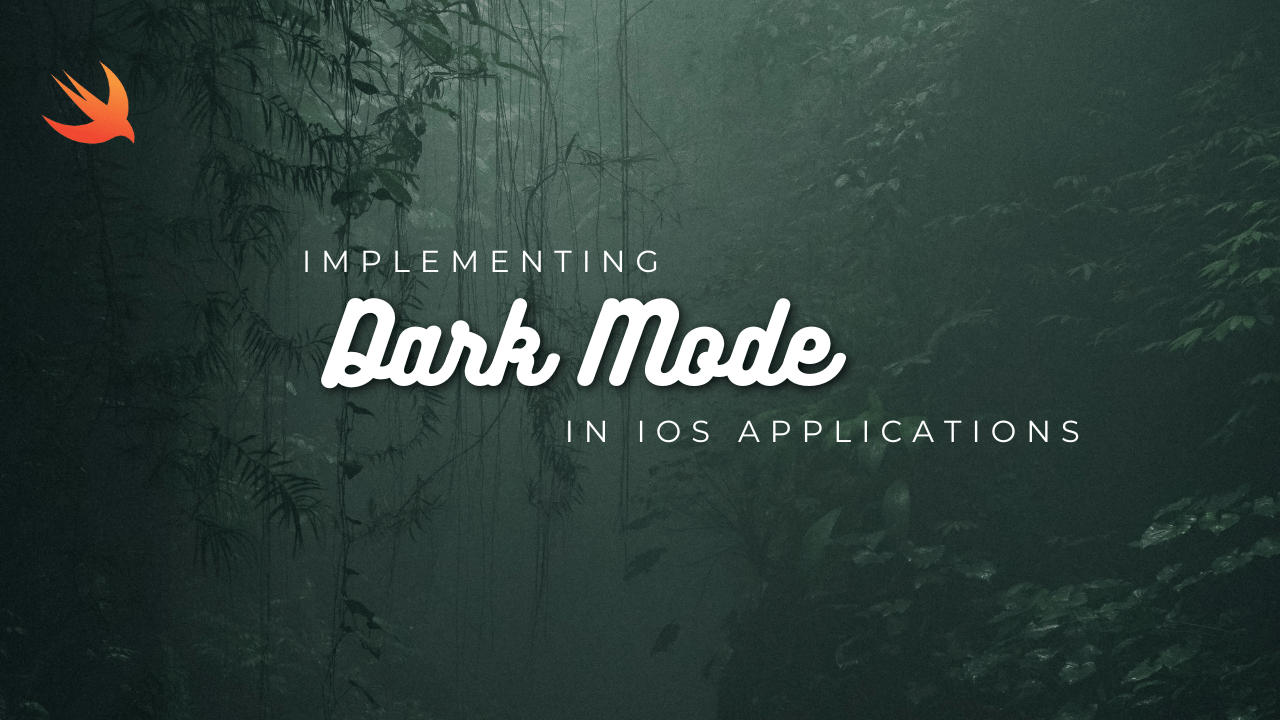
Implementing Dark Mode in iOS apps enhances user experience by providing a visually comfortable interface, especially in low-light environments. Here’s how you can implement Dark Mode in your iOS app using Swift:
- Enable Dark Mode in Xcode:
- Ensure your Xcode project supports Dark Mode by selecting the “Dark” appearance from the Interface Builder.
- Adopt Semantic Colors:
- Use semantic colors provided by UIKit like
UIColor.label,UIColor.systemBackground,UIColor.systemGray, etc. These colors adapt automatically to Dark Mode.
- Use semantic colors provided by UIKit like
- Asset Catalog:
- In your asset catalog, provide both light and dark versions of images, icons, and other graphical assets. Xcode manages the switching between these assets based on the current interface style.
- Override Colors Dynamically:
- If you’re customizing colors programmatically, use the
traitCollectionDidChange(_:)method to detect changes in the interface style and update your UI accordingly.
- If you’re customizing colors programmatically, use the
override func traitCollectionDidChange(_ previousTraitCollection: UITraitCollection?) {
super.traitCollectionDidChange(previousTraitCollection)
updateUIForCurrentTraitCollection()
}
func updateUIForCurrentTraitCollection() {
if traitCollection.userInterfaceStyle == .dark {
// Update UI for Dark Mode
} else {
// Update UI for Light Mode
}
}- Dynamic Type and Fonts:
- Ensure your app’s fonts support Dynamic Type to adapt to user preferences for text size. Also, choose appropriate font weights for better readability in both light and dark modes.
- Testing:
- Test your app thoroughly in both light and dark mode to ensure that all UI elements look good and are easily readable in both modes.
- Responding to System Changes:
- If your app supports versions prior to iOS 13, you can use the
UIApplication.didChangeStatusBarStyleNotificationnotification to detect changes in the interface style and update your UI accordingly.
- If your app supports versions prior to iOS 13, you can use the
- User Preference:
- Allow users to override the system appearance setting by providing an option within your app to choose between light and dark modes.
- Third-Party Libraries:
- Consider using third-party libraries like
SwiftThemeorNightNightto simplify managing Dark Mode styles and transitions.
- Consider using third-party libraries like
- Accessibility:
- Ensure that your app remains accessible in both light and dark modes. Test with VoiceOver and other accessibility features to guarantee that all users can navigate and use your app effectively.
By following these steps, you can effectively implement Dark Mode in your iOS app using Swift, providing users with a seamless and visually pleasing experience across different lighting conditions.
